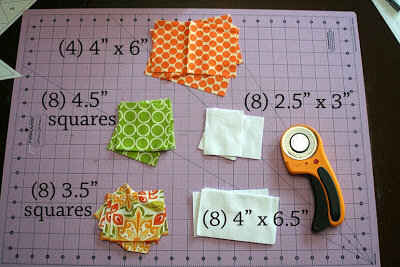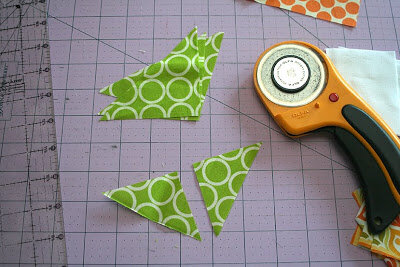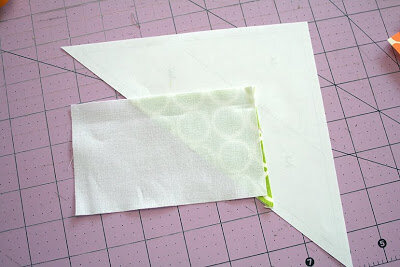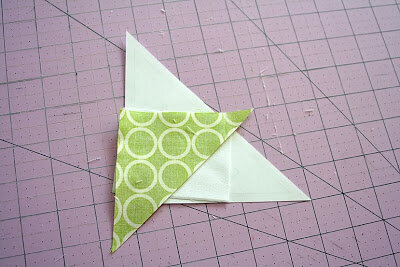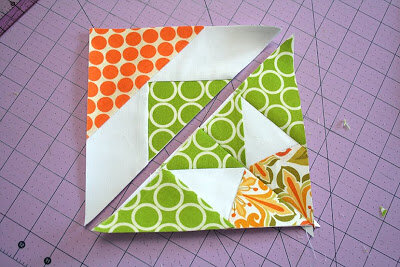Kansas Dust Storm: A free block pattern
Welcome to our last block in the Summer Sampler Series. I hope you've enjoyed the ride and you're ready for the big finale! But before I get to today's block, I want to thank Kate and Faith for coming up with such a fabulous quilt-along idea, and for inviting me to join them in hosting it. I've really enjoyed it!
This is Kansas Dust Storm, block #3596 in the Encyclopedia Of Pieced Quilt Patterns. Much like Faith's "Rocky Road to Kansas" block, this block got its name from a very specific time and place in history. The block pattern was published by the Kansas City Star in December 1935, in the midst of the Great Depression and the Dustbowl (April 1935 saw some of the worst dust storms in the history of the U.S.). Not surprisingly, quilting thrived in the 1930s—families often needed to make use of every scrap of fabric they had, and that usually meant making quilts. So this block is representative of an important era in the history of the craft.
As I was choosing fabric for my block, I realized that Kansas Dust Storm is actually quite similar to the Evening Star block that Kate posted about on Monday. They're both eight-point stars, just oriented a little differently. For that reason, I reversed out the prints and did the star points in my background white, putting more focus on the secondary design that forms around the star. And I love how it turned out—somehow it really does remind me of a weak sun shining in the hazy Dustbowl sky.
For this block, you will need three templates: Template A, Template B, and Template C. You'll need four copies of each of the three templates. Sorry about the three templates, but this was the only way I could come up with that avoided Y-seams. And if you've come this far in the quilt-along, you're a paper-piecing expert by now. So I know you can do it! If you haven't done paper-piecing before, I recommend checking out Faith's tutorial for the Star block first, as that's a great introduction to this skill.
1. Cut your fabric as follows:
• Center (my floral print): 3.5" squares - cut 8 (I fussy-cut mine)
• Green squares: 4.5" squares - cut 8
• Orange-dot corner triangles: 4" x 6" - cut 4
• White star points: 2.5" x 3" - cut 8
• White background: 4" x 6.5" - cut 8
2. Cut the 4.5" squares (my green print) in half diagonally, so you now have 16 triangles.
3. Take 4 (only 4!) of those 16 triangles and cut them in half again, as shown, to make 8 smaller triangles.
4. Place one of the 12 larger triangles on the back of Template A, so that it covers Section 1 (but on the back of the template). Hold it up to a light source to check that your piece is in the right place, and adhere with double-sided tape, a glue stick, or a pin.
5. Lay one of the 4" x 6.5" background pieces over the top of the center triangle, right sides facing. Match up the long edge along the line between Section 1 and Section 2.
6. Sew along the line (using a shorter stitch length to help perforate the paper) and press back the background piece.
7. Do the same thing for Section 3, with another 4" x 6.5" background piece.
8. Now it should look like this.
9. Add one of the 4" x 6" corner triangle pieces.
10. Sew and press into place, then trim the excess fabric, using the paper template as a guide for where to trim. Your Unit A should now look like this. Repeat to make three more Unit As just like it.
11. Now we'll move on to the B and C templates, which are exactly the same, except that they are mirror images of each other. Start by adhering a 2.5" x 3" background piece to the back of each template, covering Section 1.
12. Place one of the 8 remaining large green triangles over the white background piece. One of the short sides of the triangle should line up with the line between sections 1 and 2. Flip over, sew along the line, and press into place.
13. Continuing piecing the B and C units, using the smaller green triangles and the floral octagon pieces. When the units are completed and trimmed, they should look like this.
14. You should now have 4 A units, 4 B units, and 4 C units. I removed the paper at this point—from here out, I found it easier to piece things accurately without the paper. Take one B unit and one C unit and sew the short sides together to make a larger triangle, as shown above.
Not like this! This is an easy mistake to make with this block, as you can see! (I wish I could say I did this solely for educational purposes, but it ain't so.) This way even looks right. But it's not.
15. Join your pieced B/C triangle to an A triangle, as shown, to make a square.
16. Then piece your four squares together to complete the block.
And there we have it: 12 completed sampler blocks. I'll be sashing the blocks and putting the top together in the next week, so come back here next Friday to see my completed top! I'll post yardage and cutting requirements for my sashing at that time, in case anyone is interested.
Huge thanks to everyone who quilted along with Kate, Faith, and me this past month (and to everyone who may do these blocks in the future!). I had so much fun doing this quilt-along with all of you. The blocks that have shown up in the Flickr group are absolutely stunning. I can't wait to see all of the finished quilts!


